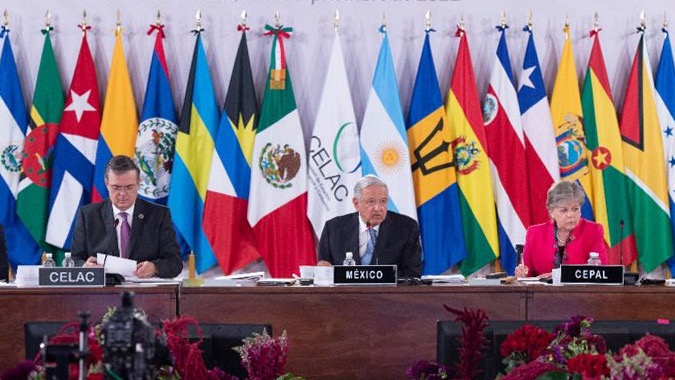Strengthening Mental Health Support Networks Across the Americas: A Multifaceted Approach
The escalating global burden of mental health disorders necessitates a comprehensive and collaborative response, particularly across the diverse landscape of the Americas. This article analyzes the multifaceted barriers hindering the development of effective mental healthcare systems, proposing actionable strategies grounded in relevant theoretical frameworks to foster positive change and build more resilient communities. Key concepts addressed include the Social Cognitive Theory, which emphasizes the interplay of personal factors, environmental influences, and behavior; the Health Belief Model, focusing on individual perceptions of health threats and benefits of action; and the ecological model, highlighting the interconnectedness of individual, interpersonal, organizational, community, and societal factors influencing health outcomes. These models provide a framework for understanding and addressing the complex challenges in mental healthcare access.
Analyzing the Complexities of Mental Healthcare Access in the Americas
The path towards equitable and comprehensive mental healthcare in the Americas faces interconnected obstacles. Firstly, a significant knowledge deficit regarding mental health prevalence, available resources, and effective help-seeking strategies contributes to delayed or absent treatment. This aligns with the Health Belief Model, emphasizing the crucial role of perceived susceptibility and severity of illness in motivating health-seeking behavior. The prevailing stigma and discrimination surrounding mental illness, further hindering access to care, are consistent with the Social Cognitive Theory's emphasis on the impact of social norms and environmental factors on individual behavior. This stigma perpetuates social isolation, exacerbating mental health challenges and creating a cyclical pattern of suffering. This lack of awareness and the presence of stigma hinder the utilization of available mental health services, even when services exist.
Secondly, insufficient resource allocation and funding severely limit the establishment and maintenance of effective mental healthcare systems. The limited availability of qualified mental health professionals and appropriate treatment options, particularly in underserved communities, directly contradicts the principles of health equity. This shortage of trained professionals underscores the need for increased investment in comprehensive and ongoing professional development programs, tailored to the diverse cultural contexts and demographic needs across the Americas. This aligns with the ecological model by highlighting the critical role of organizational-level factors (resource allocation) in shaping individual-level health outcomes.
Strategies for Enhancing Mental Healthcare: A Multi-pronged Approach
Addressing these challenges requires a strategic, multi-pronged approach. Firstly, raising public awareness through evidence-based public health campaigns and community engagement initiatives is crucial. These campaigns, guided by the principles of the Social Cognitive Theory, should aim to modify attitudes, beliefs, and behaviors related to mental health. They should emphasize self-care strategies, early intervention, and the normalization of help-seeking. This increased awareness, according to the Health Belief Model, should ultimately increase the perceived benefits of seeking mental healthcare and decrease the perceived barriers.
Secondly, actively combating stigma requires targeted interventions. These initiatives should challenge harmful stereotypes, promote empathy, and create safe spaces for dialogue and sharing experiences. The implementation of robust legal frameworks prohibiting discrimination based on mental health status is also essential. Such strategies, aligning with the Social Cognitive Theory, aim to shift social norms and create environments supportive of mental well-being.
Thirdly, bolstering resource allocation demands increased and sustained investment in mental health initiatives. This investment must prioritize expanding access to affordable and culturally appropriate services, encompassing therapy, medication management, and crisis intervention, with a focus on marginalized communities. Further, substantial investment in training and continuous professional development for mental health professionals is essential. These comprehensive training programs should equip professionals with the cultural competence and expertise needed to address the diverse mental health needs across various demographic groups and cultural contexts. The allocation of these resources aligns with the ecological model's emphasis on the impact of organizational and societal factors on health outcomes.
Fostering Collaboration, Inclusivity, and Technological Advancements
Effective mental healthcare requires collaborative efforts among diverse stakeholders. Collaboration between governments, NGOs, healthcare providers, community leaders, and individuals with lived experience is vital for maximizing efficiency and impact. This collaborative ecosystem, guided by principles of community-based participatory research, ensures that interventions are relevant and effective. Pooling resources, sharing best practices, and coordinating efforts across sectors are key for creating a cohesive and efficient support system.
Cultural sensitivity is paramount in this collaborative framework. Culturally competent care recognizes and respects diverse cultural backgrounds and traditions. Providing culturally tailored services ensures the relevance, accessibility, and efficacy of support services for all individuals, regardless of background. Peer support networks, both online and in-person, can foster communities of understanding and mutual support, mitigating feelings of isolation.
Engaging young people as advocates and allies is crucial for driving lasting change. Empowering youth to promote mental health awareness and advocate for policy changes fosters a more inclusive and supportive society for future generations. Leveraging technology, specifically telehealth platforms and mobile applications, can significantly expand access to mental healthcare, particularly in underserved areas, overcoming geographical barriers to care.
Conclusion and Recommendations
The challenges in mental healthcare access in the Americas are multifaceted, requiring a comprehensive approach encompassing awareness campaigns, stigma reduction, resource allocation, and collaborative partnerships. A strategic application of theories like the Social Cognitive Theory, the Health Belief Model, and the ecological model provides a robust framework for designing and implementing effective interventions. Increased funding, improved training for mental health professionals, and the use of technology are essential for achieving equitable access to mental healthcare. Further research should focus on evaluating the effectiveness of culturally-adapted interventions and exploring innovative strategies for promoting mental well-being within diverse communities across the Americas. A strong focus on strengthening community-based support systems and fostering intersectoral collaboration is critical for building a society that genuinely prioritizes mental well-being.
Reader Pool: What innovative strategies, informed by relevant theoretical frameworks, could be implemented to improve mental healthcare access within specific marginalized communities across the Americas?




No comments yet. Be the first to share your thoughts!